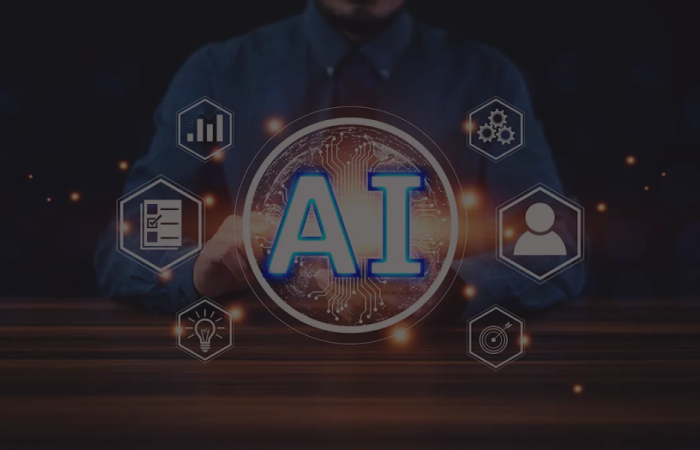“In an economy where the only certainty is uncertainty, the one sure source of lasting competitive advantage is knowledge.” – Ikujiro Nonaka, a famed organizational theorist, best known for his study of knowledge management
The economy has a significant bearing on the hiring and recruitment strategy and employee engagement.
The labor market currently is amid one of the worst economic uncertainties. Mass layoffs and hiring freezes have become rampant, as companies try to reverse the hiring frenzy witnessed during the pandemic, fears of a recession (according to the World Bank, by 2023) loom, and automation is adopted as part of technical makeover.
The tech sector alone saw close to 82,000 job-cuts, as Meta, Amazon, Twitter, Snap, Microsoft, Apple, Disney, one behemoth after another joined the fray to downsize the workforce.
The turmoil has left leaders and HR recruiters quite concerned. As they strive to adopt the right recruitment and hiring strategy,it has bred many questions.
What does the future of talent development look like? How will layoffs affect employee engagement and morale? Will organizational agility and adaptability alone guide talent development and management in navigating through the economic uncertainty, or will the C-suite and talent management executives lead by empathy and compassion, too?
While it makes perfect strategic sense to focus on core operations and shore up the bottom line, the impact of layoff on employees is huge. It is stressful and psychologically disturbing, as losing a job puts financial security and self-identity at stake.
It is costly for the company too. It could affect its brand positioning among consumers, disturb the equation between management and other stakeholders, and lead to loss of workforce—laying off has a ricochet effect on employee engagement and retention. This will affect both revenue and productivity.
Most important, any cost-cutting that does not factor in the human angle flies on the face of the much-touted compassion and empathy. It strikes at the root of DE&I commitment, rendering it hollow.
Therefore, it is imperative that C-suite leaders and HR leadership (including talent development executives) collaborate to develop the right strategy based on insights and data. This will help the organization tide through either of the two situations: whether facing a talent or skill shortage, or when bracing up for impact post-layoffs.
First, some numbers:
According to data provided by the US Bureau of Labor Statistics (BLS), the number of job openings stood at 10.3 million in October 2022, while hires totaled 6.0 million and separations reached 5.7 million. Under separations, 4.0 million quit their jobs, while 1.4 million were laid off or discharged.
In yet another indicator of economic instability, a study by i4CP and Fortune, cited by Forbes, reveals labor shortages and skill deficit serving as one of the greatest disruptions in 2022. Moreover, the BLS reported a 9.1% jump in the CPI in June 2022.
Faced with the double whammy, what must a leader do to adjust hiring and recruitment to address economic uncertainty?
Analyze the situation and ask the right questions for incisive decision-making
The precursor to any adjustment in hiring or recruitment during a turbulent phase is excess of employees or a shortage of labor. This determines whether a leader will go for a freeze on hiring or layoff, or opt for fresh recruitment. Technically speaking, retrenchment and recruitment are two sides of the same coin, where each has a bearing on the other.
Begin by asking the right questions:
- Understand how the economic uncertainty is unfolding for your specific organization.
- Do you foresee it lasting long, or will it be of a short duration?
- What will you need to sustain?
- Can you sustain by putting a freeze on hiring, or do you need to let go of people to remain profitable?
- If you figure out layoff is the only way out, you need to approach it sensitively—retrenchment should be the last resort. Don’t go for reducing the workforce just because it worked for your competitor. Layoffs affect your employees, your customers, brand, and stakeholders in the company.
- Strategize job-cuts thoughtfully, if you need to go for one.
- Which functions will you target for laying off people? Leaders usually go for support functions first, including reducing investment in HR operations. However, this could be damaging. Many of these in-house or outsourced teams significantly connect with the consumers/customers; plus, downsizing functions like HR will have a direct bearing on your hiring efforts. Also, assess if the workforce in these teams is easily replaceable. Often decisions are taken in a huff only to be regretted later when finding the right replacement proves to be a nightmare.
- How will these layoffs affect your daily/routine functions? Will this put more strain on the remaining employees?
- What are the alternatives if you were to not consider retrenching? Could you make budgetary adjustments, or could the company take salary cuts, or could you reduce the working hours? Could you absorb the people in another function? These are good ways to acknowledge the contribution of every employee in the company. It also sends out the message that you care for your employees.
- Now that you’ve realized job-cuts are an abject necessity, decide on what basis will you slash. Coordinate with HR managers/leadership to determine the standards—performance (based on thorough documentation) should be the key criterion. Assess the level of seniority of the employee, and financial and business impact of the exit. Consult the line managers before deciding.
- Create a detailed plan for layoff. Be methodical right from assessment of performance to communication of the decision to align and manage the process efficiently. Train your line managers or other people in positions of authority to communicate the decisions with grace and sensitivity. Inform them clearly about why the decision is being taken. This will clear the air, sparing them the feeling that they are being made scapegoats for your inability as an organization to achieve the desired numbers.
- Include relevant benefits as part of the layoff package, or unemployment resources, depending on their eligibility. Give scope to negotiate their severance, if they wish to.
- Most organizations treat retrenched employees dismissively. This is a grave error. Employees, current or former, serve as spokespersons for your brand. Given the connectivity today, especially with social media, this goes a long way in building an impression of your company. When people speak good about you, it could attract high-potential candidates to the organization. Also, treating outgoing employees with grace and dignity sends a message to existing employees and helps in employee retention.
- People value integrity and transparency. If you can afford this to an employee that has served you, you will create goodwill – an intangible asset.
Connect with your people and upskill your current workforce for employee engagement
This is the first step a leader should consider when faced with a labor or skill shortage, instead of making a beeline for hiring. Upskilling resources is also a prudent investment during a hiring freeze. The available bandwidth can be used judiciously.
Developing internal resources is especially relevant after a mass layoff when the morale of employees is down and people are insecure about job stability. The resultant disengagement can cause them to look for other opportunities.
- Start with reaching out to your employees. You can either do this directly, if your employee strength is manageable, or if it is a big organization, sensitize your line managers and other reporting managers, or HR managers, to connect with their reportees. This will help you understand their thought process, what they expect from the company, and how you can improve things; you can accordingly take steps to address their concerns.
Coordinate with HR leadership and review the steps you can take to improve the quality of life of the workforce. Keep the work environment flexible; if hybrid work suits their requirement, give them the option. In a 2021 survey by McKinsey, nearly 58% of employees said that their productivity had increased in a hybrid work. Revisit the perks, allowances, or benefits available to them; see if you can upgrade these.
- Most importantly, upskill the existing workforce. Invest time and effort in understanding how you can enhance their expertise to fill up the skill gap. Chalk out a detailed learning and development (L&D) program. If you already have one, modernize it by adding new skills, following thorough research and due diligence, and make it relevant to the workforce requirement. Ensure L&D is revisited at regular intervals to include new training modules that will ease the transition into new roles. Talent development initiatives can be used prudently to give clarity on career progression.
- Build leadership performance and engagement. Organizations are increasingly investing in developing leadership potential. Having resilient leaders and teams that respond quickly and effectively to situations is critical to steer an organization through unpredictability and uncertainty.
Josh Bersin Academy, founded by industry analyst and thought-leader Josh Bersin, and NIIT, a skill and talent development company, jointly conducted a research, Adaptive Learning Organization. The study, cited in an article by Forbes, shows that more resilient HR organizations usually see 15% higher ratings for senior leadership.
According to the US Bureau of Labor Statistics, the employment of top executives is projected to grow 8% over 2020-30, with about 247,100 openings forecasted (for top executives) each year, on average. Many of these will be because of vacancies following either transfer to other occupations or exit post-retirement.
You need to be strategic to ensure investments in leadership development yield maximum results. Begin by collating data to identify the people you feel you can invest in, and assess the requirement. Map this development data with the financials to understand which programs or solutions you need to prioritize. Depending on your finances, you could deploy sophisticated technologies, such as AR and VR-based immersive simulation for on-the-job interactive experience and training.
Revisit your recruitment strategy to integrate agility and adaptability
- Use the downturn when you are not hiring actively to streamline your hiring strategy. This would include having HR re-work on the job templates for job postings or update the application forms; leverage new mediums such as social media; reduce paperwork and electronic records; revisit the profiles and resumes of candidates that did not clear previous hiring cycles; and redefine roles or job descriptions to fit current requirements.
Collaborate with HR leadership to improve your source recruiting strategy. You could employ a recruiting platform. A recruiting software will automatically fetch resources and boost productivity. This is also cost-effective. You can develop your talent pool without incurring expenses on memberships or subscriptions.
Build a strong internal candidate development program. This is effective when you already have high potential candidates working in your organization. See how you can recruit internally without disturbing the balance of the functions they are currently engaged in. If you are recruiting them for a position you are looking to fill, have a plan to fill up the gap for their current position. One way is to have a strong referral program.
If internal sourcing is not sufficient, you could consider outsourcing talent acquisition, depending on the size of your organization and its requirements. Hiring an external recruiter with expertise can be both cost-efficient and help you access hard-to-find candidates, especially during economic uncertainty. Before you do, thoroughly vet the external sourcing partner and do the due diligence so that you get maximum value for the money invested.
You could also outsource some functions temporarily if sourcing the right candidate for the job is difficult.
- Have HR work on refining the screening process to hire only the right fit. This is relevant during phases of mass layoffs by organizations. Having the right screening process will help you filter out candidates from the horde you may attract.
By understanding a candidate’s salary and career aspirations during the screening process, you will know how they can align with your organization’s values and if they are worth investing in. From the data collated, you can draw insights on demands and expectations.
Also, screening could be made flexible, such as over video calls, to accommodate for the busy schedules.
- Revisit onboarding and personalize it. Onboarding is crucial for new-hire experience. It, therefore, should be given top priority in HR strategic objectives. Often, organizations lose focus and confuse it with orientation. Onboarding is rather a year-long process which contributes to overall work experience. According to data collated by Oak Engage, a provider of enterprise collaboration software, effective employee onboarding can increase retention by over 80%. Moreover, organizations with structured onboarding recorded a nearly 60% jump in revenues, while employees with good onboarding experience are nearly 18 times more committed to the organization.
Structure the onboarding program to incorporate feedback from new joinees and managers. Based on this, design programs to help them execute their tasks and develop good relationships across the organization for more inclusive growth.
By optimizing onboarding, you can significantly boost employee engagement and retention. Talent development executives and C-level leaders need to collaborate for smarter decision-making and to achieve higher goals in challenging market conditions. By incorporating strategic data into routine business operations, you can streamline operations and increase their efficiency in managing the ups and downs through uncertainty.
- Automate processes to improve efficiency. Take a call depending on the strength of your organization and only when you are convinced, as this itself may lead to some job losses in HR.
You could install an applicant tracking software for streamlining every process, from sourcing to onboarding. The software will help HR find quality candidates by streamlining the pipeline, and hire them faster. It will simplify screening and throw up candidate profiles customized to your hiring requirements. Moreover, it will automate onboarding and make workflow consistent. This can also improve candidate experience from the application phase to hiring and enhance transparency.
A recruiter platform is scalable. Hence, if you deploy it early, you can scale it up as you and your organization grow. This will not only strengthen communication but also provide agility which you need during economic uncertainty.
- Add Artificial Intelligence capabilities. This could transform HR into a high-impact function. However, you need to take this decision in consultation with your HR leadership and other board members. This is because this will involve an investment and your people need to fully understand the benefits. Given the size and scope of your organization and suitability of adopting AI in functions, it may be a tough ask to “sell” the idea to them.
Also, you need to approach it mindfully, as any move to AI will obviously result in job-cuts. A slowdown is the best phase when you can ideate on such initiatives and assess their impact.
Adding AI capabilities and digitalizing functions will certainly benefit HR, like any other function, such as finance or SCM. It will facilitate data-based analytical decision-making and mapping the contribution of HR in monetary terms vis-à-vis the organization’s strategic goals and objectives. Plus, integration of AI represents technological advancement—it will make your business forward-looking.
Hiring is difficult and slow during uncertain times. You need to address the internal and external factors that pose a challenge, and adapt to the changes. Partnering with an external sourcing partner, or installing a recruitments software, besides making internal processes lean and efficient, are some ways you can improve hiring productivity and streamline your hiring stack.
To conclude
Economic uncertainty tests the tenacity of a hiring and recruitment strategy, with implications at multiple levels: talent development, career progression, and employee engagement.
But what appears as a challenge for business leaders, talent development executives or the recruitment leadership, could also open up unknown possibilities and opportunities.
What is the spell to turn the situation into your favor?
The knowledge that “strategy requires empathy” (The Nine Formulas of Sun Tzu’s The Art of War)—and the will to give effect to it. No competitive advantage or success can be based on conflict. Good strategizing does not mean being insensitive.
For instance, letting go of people may be a strategic necessity in an unpredictable economic environment. How you give effect to it will determine your statesmanship as a leader.
Any knee-jerk reaction will give you the results (perhaps faster) as much as a well-thought-out strategy developed with empathy in mind. But the questions you should ask are: what is the longevity of the outcome and how will it affect the intangible value of the brand?
No component of a hiring and recruitment strategy works in isolation—the times we are in, every action has a domino effect.
The path you take to get the dominoes to fall will determine what cascades next.


